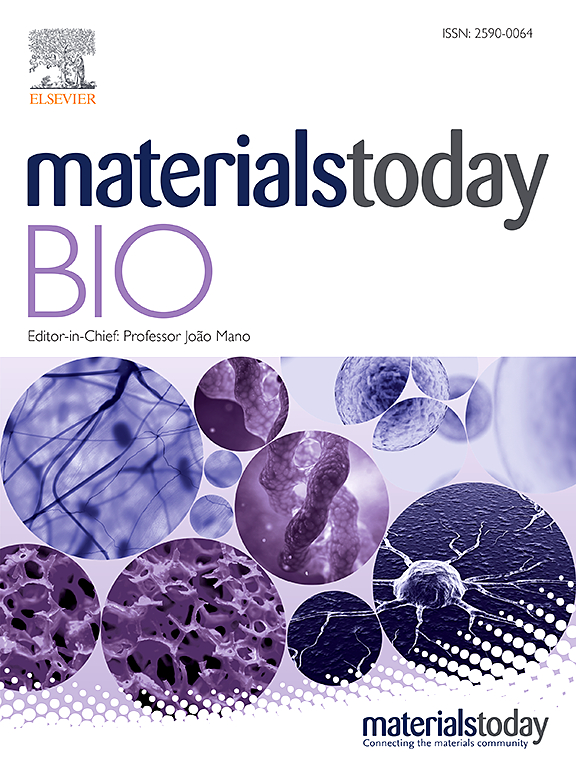Bioactive deproteinized bovine bone mineral based on self-assembled albumin nanoparticles promoted bone regeneration via activation of Wnt/β-catenin pathway
IF 8.7
1区 医学
Q1 ENGINEERING, BIOMEDICAL
引用次数: 0
Abstract
One of the major problems faced with pre-implant bone reconstruction therapy is that large bone defects do not heal over time. Artificial bone graft materials, such as deproteinized bovine bone mineral, are commonly used in clinics. However, the lack of osteoinductive capacity and risk of post-implantation infections remain key limitations. Bioactive materials with strong bone formation and a high degree of biocompatibility are still needed. In this study, we synthesised bovine serum albumin nanoparticles (BNP) loaded with Tideglusib (TD), TD and BNP were bound together by self-assembly, and mixed with deproteinized bovine bone mineral (DBBM) to form a bone substitute material (TD-BNP@DBBM) that had low cytotoxicity, promoted cell proliferation and migration, induced cell differentiation, and regulated osteogenesis. In vitro, experiments suggested that TD-BNP@DBBM could promote osteoblast differentiation of MC3T3-E1 cells. In vivo, experiments demonstrated that TD-BNP@DBBM significantly accelerated bone reconstruction and enhanced bone healing in a rat cranial defect model. Furthermore, this result suggested a link between the Wnt/β-catenin pathway and the osteogenic effect, providing a basis for subsequent investigations into the mechanism of bone regeneration induced by osteogenic biomaterials. TD-BNP@DBBM might be a promising new approach for treating bone defects.

求助全文
约1分钟内获得全文
求助全文
来源期刊

Materials Today Bio
Multiple-
CiteScore
8.30
自引率
4.90%
发文量
303
审稿时长
30 days
期刊介绍:
Materials Today Bio is a multidisciplinary journal that specializes in the intersection between biology and materials science, chemistry, physics, engineering, and medicine. It covers various aspects such as the design and assembly of new structures, their interaction with biological systems, functionalization, bioimaging, therapies, and diagnostics in healthcare. The journal aims to showcase the most significant advancements and discoveries in this field. As part of the Materials Today family, Materials Today Bio provides rigorous peer review, quick decision-making, and high visibility for authors. It is indexed in Scopus, PubMed Central, Emerging Sources, Citation Index (ESCI), and Directory of Open Access Journals (DOAJ).
 求助内容:
求助内容: 应助结果提醒方式:
应助结果提醒方式:


